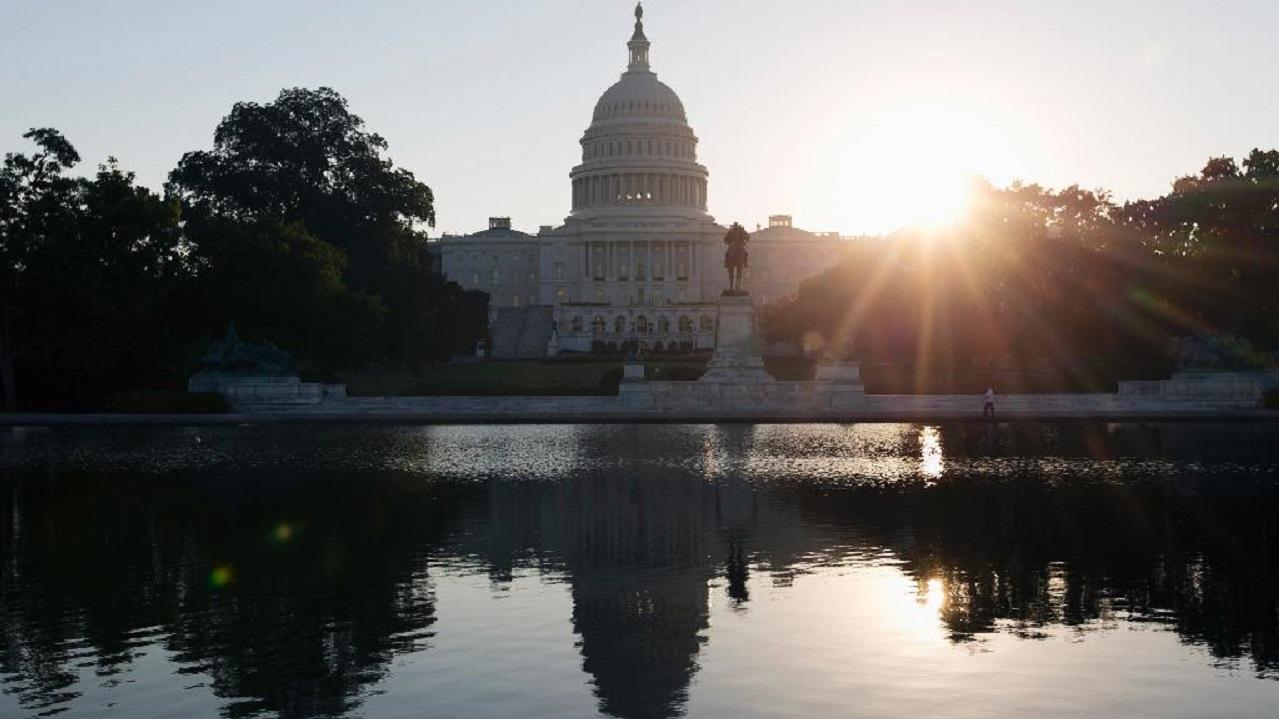Coronavirus hurting economy: Best solutions to blunt impact
We already know that there will be a meaningful economic impact from coronavirus
The coronavirus has sent financial markets into a tailspin this year. The S&P 500 has declined by more than 20 percent. Prediction markets now believe that there is a 60 percent chance of a recession occurring by the end of 2020.
We already know that there will almost certainly be a meaningful economic impact from coronavirus. To blunt its impact, Congress should seriously consider passing President Trump's proposed payroll tax cut. In fact, lawmakers might even consider tweaking it to specifically target low-income or hourly workers. A payroll tax cut would shore up demand and if Congress chose to make many elements of the 2017 Tax Cuts and Jobs Act permanent it would also help to revive business confidence on the supply side.
WHAT COULD A BAILOUT FOR THE CRUISE, HOTEL AND AIRLINE INDUSTRIES LOOK LIKE?
On the demand side, economists and markets are worried that consumers will reduce their spending in response to COVID-19.
Global central banks, including the Federal Reserve and Bank of England, have responded to the coronavirus crisis with emergency interest rates cuts and have signaled that they are likely to cut interest rates even further.
Indeed, lower interest rates will help to increase consumption and investment by lowering the cost of borrowing for consumers and businesses.
On the fiscal policy front lower payroll tax cuts, like the 1 year 2 percent payroll tax cut being proposed by President Trump, could meaningfully help to further boost consumption.
HYATT WITHDRAWS 2020 GUIDANCE DUE TO CORONAVIRUS OUTBREAK
Other stimulus proposals have suggested sending tax rebates to individuals and families. While such a solution would quickly deliver more money to individuals than a payroll tax cut, the empirical literature shows that tax rebate windfalls (like the 2008 tax rebate passed under President George W. Bush) tend to be saved rather than spent.
A recurring (or even permanent) payroll tax cut on the other hand, especially targeted toward hourly or low-income individuals that could even become a negative payroll tax (that is people would get payroll tax subsidies), would more likely help to boost spending. This partly because of what behavioral economists call "mental accounting" -- that is that people are more likely to spend something that they see as a permanent boost to their income.
The idea that $1,000 or $2,000 tax rebate checks could only target the subpopulation of infected families and would be enough to help assist them in covering medical costs is wishful thinking.
For this reason, we should consider the public health impact (individuals directly impacted by coronavirus) and the more widespread economic impact (caused by coronavirus fears) as requiring two very separate types of responses.
NEW ROCHELLE CORONAVIRUS: WHAT YOU NEED TO KNOW
The public health impact response should include items such as using disaster funds to pay for uninsured medical bills, paid leave relief, funding for test kits and other items included in the COVID-19 public health $8 billion coronavirus relief package Congress passed last week.
Meanwhile, negative consumer spending shortfalls could more easily be fought by payroll tax cuts, particularly targeting low-income or hourly workers who tend to spend more of their incomes.
On the supply-side, the coronavirus, by disrupting global supply chains, also presents a supply-side shortfall (e.g. where factory shipments and software roll-outs are delayed), a point echoed by former IMF chief economist Olivier Blanchard.
CLICK HERE TO GET FOX BUSINESS ON THE GO
A supply-side shortfall should be met with a supply-side policy response. Fortunately, this is exactly what many elements of the Tax Cuts and Jobs Act of 2017 would embody. It's also something that Trump and National Economic Council (NEC) director Larry Kudlow have urged for some time under what they've generally dubbed "Tax Cuts 2.0".
"Tax Cuts 2.0" includes making the pass-through business tax cuts of the Tax Cuts and Jobs Act of 2017 (set to expire in 2025) permanent.
Making capital expenditure full expensing a permanent part of the tax code could also help to revive global business investment in the U.S. after the global supply chain has taken a coronavirus beating.
Possibly lowering the corporate tax rate below its current 21 percent rate (which came down from 35 percent after President Trump signed the Tax Cuts and Jobs Act of 2017 into law) would be one additional obvious way to shore up battered business confidence. This option has apparently already been discussed according to outgoing White House chief-of-staff Mick Mulvaney.
The full extent of the coronavirus economic damage is still unclear. While the initial response of central bank rate cuts has been made out of risk management, the ultimate magnitude of a fiscal response should be data-dependent and all options should remain on the table.
Going forward we should focus on a "smart stimulus." The more permanent tax cuts are made to alleviate demand and supply shortfalls, the more they can do to mitigate the economic damage.
A separate public health response that includes offering paid leave solutions for low-income workers, waiving SNAP work requirements, extending tax deadlines, offering business loans and helping with medical bill co-pays, as the Trump administration is doing, will also provide critical help for Americans in need.
Jon Hartley is an economic policy analyst, researcher and writer. Follow him on Twitter @Jon_Hartley_






















